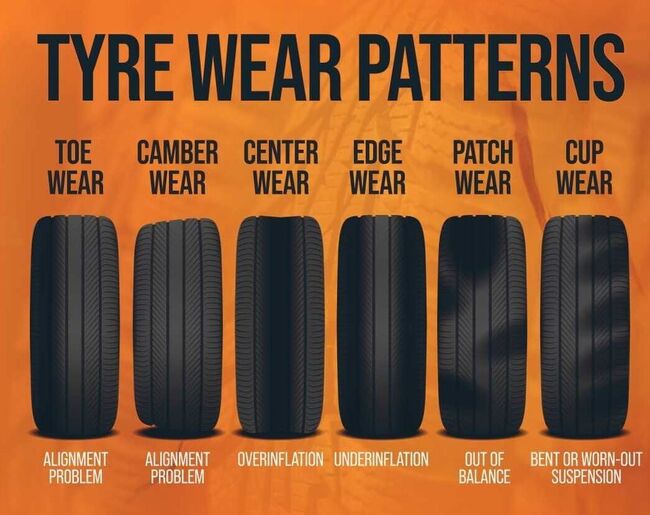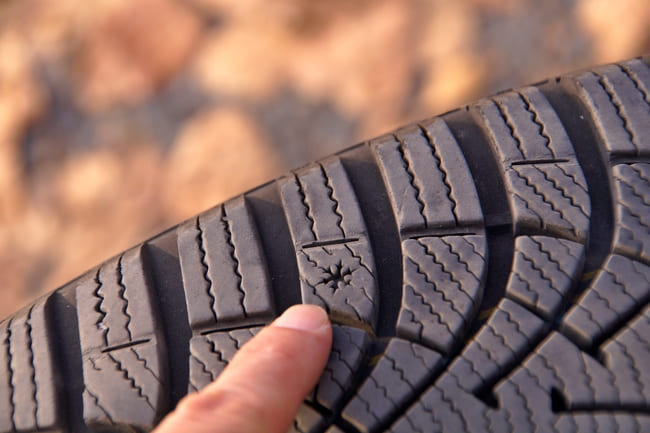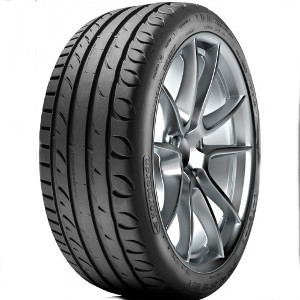Table of Contents
Uneven tyre wear: What can cause excessive or uneven tyre wear & how to prevent it
Have you noticed that your car tyres are wearing faster or more unevenly? It's more than just a nuisance – it can affect your safety. Uneven tyre wear is often caused by things like incorrect pressure, poor alignment or worn suspension. Stay safe and save money by checking pressures, rotating tyres, and keeping your wheels properly aligned.
What does uneven tyre wear mean?
Uneven tyre wear means that the tread is worn unevenly across the tyre surface, often due to worn or damaged suspension components. When car suspension parts such as shocks, struts or bushings are in poor condition, they can affect the way the tyre contacts the road, leading to uneven wear.

Other frequent causes include incorrect wheel alignment, unbalanced tyres, and incorrect tyre pressure. For example, excessive wear on the inner or outer edge of a tyre often indicates alignment problems, while patchy or cupped wear can indicate unbalanced wheels or faulty suspension.
By identifying the specific wear pattern of your tyres, you can find the cause of the problem. Practising preventive maintenance – such as checking your suspension components, rotating your tyres and ensuring proper alignment and pressure – will help you avoid uneven wear, improve your vehicle's performance, and drive more safely.
What can cause uneven tyre wear?
Irregular tyre wear is typically caused by mechanical issues, poor alignment, or improper tyre maintenance. Here are some of the top reasons why tyres can wear unevenly:
- Incorrect wheel alignment: Misaligned wheels can lead to rapid wear on one edge of the tyre.
- Unbalanced tyres: If tyres are not properly balanced, it can cause vibration and uneven tread wear.
- Worn suspension components: Damaged or aged parts like car shock absorbers, ball joints, or bushings can affect how tyres make contact with the road. Installing new car shock absorbers and other suspension parts can solve the problem.
- Improper tyre pressure: Overinflation leads to excessive wear in the centre, while underinflation wears the outer edges more quickly.
- Driving habits: Frequent hard braking, fast cornering, or aggressive acceleration can wear tyres unevenly.
- Lack of tyre rotation: Failing to rotate tyres regularly can result in uneven tread wear due to differences in load and function between front and rear tyres.
Tyres wearing on outside: Symptoms
Outer tyre edge wear is a common issue that usually points to misalignment or underinflation. Identifying the specific wear pattern can help determine the cause. If wear appears on just one outer edge, it’s often due to poor wheel alignment – such as incorrect toe or camber – causing the tyre to lean and wear unevenly. This misalignment makes the tyre contact the road at an unnatural angle, increasing friction and accelerating wear on that edge.
If both outer edges are worn more than the centre, underinflation is probably to blame. An underinflated tyre loses its ideal shape, causing the sidewalls to bulge and the edges to carry more weight. This leads to faster wear on the shoulders while the centre tread sees less contact with the road.
Ultimately, these issues can compromise the overall safety of your vehicle and its occupants, highlighting the importance of regular tyre inspections and maintenance.







Is tyre wear on the outside edge legal in the UK?
In the UK, it is crucial to maintain legal tyre tread depth for road safety. The law requires a minimum tread depth of 1.6mm across the central three-quarters of the tyre, around the entire circumference. A tyre worn on the outside edge may be deemed illegal if the tread depth in that area falls below this legal minimum. If the outer edge is excessively worn and this area no longer meets the 1.6 mm requirement, the tyre is considered not road-legal.
A simple way to quickly check tread depth is the 20-pence test. Insert the coin into the tread grooves – if you can see any part of the coin's outer rim, the tread is too worn and the tyre needs replacing.
Driving with tyres that are below the legal limit can result in fines, penalty points, and significantly increased safety risks. Even if the central tread meets the legal requirement, uneven wear, such as excessive wear on the outer edge, may still negatively affect vehicle handling and braking performance.

Why do tyres wear on the inside?
Tyre wear on the inside edge is usually a sign of wheel misalignment or worn suspension components. If the alignment is off – especially with too much negative camber – the top of the tyre leans inward, putting extra pressure on the inner edge and causing it to wear more quickly. This kind of wear often goes unnoticed without a proper inspection.
Worn parts like car control arms or bushings can also affect how the tyre contacts the road, leading to uneven wear. In some cases, lowered suspension or incorrect ride height can make the problem worse.
If not addressed, inside edge wear can reduce grip, affect handling, and increase the risk of tyre failure. To stay safe and extend tyre life, it’s important to have your wheel alignment and suspension looked at regularly.
How to fix uneven tyre wear
You can’t reverse uneven tyre wear once it has happened, as the rubber that’s worn away cannot be replaced. If the wear is light, you can extend the life of the tyre by rotating it or adjusting the convergence, but heavy or unsafe wear means you need new car tyres to drive safely.
To prevent further uneven wear, it's important to address the cause. This could include correcting the wheel alignment, balancing the tyres, checking the suspension components or maintaining the correct tyre pressure.
If you notice signs like one-sided wear, feathering, or bald spots, have your tyres and vehicle checked by a professional as soon as possible.













Can you drive with uneven tyre wear?
Driving with uneven tyre wear isn’t recommended and can be dangerous – especially if the tread has worn past the legal limit. Uneven wear reduces grip, particularly in wet or slippery conditions, and can affect handling, braking, and overall stability.
Severe wear increases the risk of a tyre blowout, especially at high speeds or when carrying heavy loads. You might also notice vibrations, your car pulling to one side, or extra strain on the suspension. If the tyre is still legal and structurally sound, it may be safe for short-term use – but only until you can have it inspected and the issue resolved.
How to prevent uneven tyre wear
To keep your tyres wearing evenly, the key is to check and maintain them regularly. Make sure your tyres have the right amount of air, are properly aligned, and get rotated as recommended. This helps spread the wear and makes your tyres last longer.
Check your tyre pressure at least once a month, since too much or too little air can cause specific wear patterns. Regular wheel alignment and balancing are also a must – if your wheels are out of alignment, one edge of the tyre can wear down quickly. Rotating your tyres every 5,000 to 8,000 miles (or as your car's manual suggests) helps make sure all your tyres wear at the same rate.
Also, take a look at your suspension and steering parts, because worn parts can change how your tyres touch the road. Catching and fixing small problems early can save you from bigger headaches later.
Top products related to this topic:




































